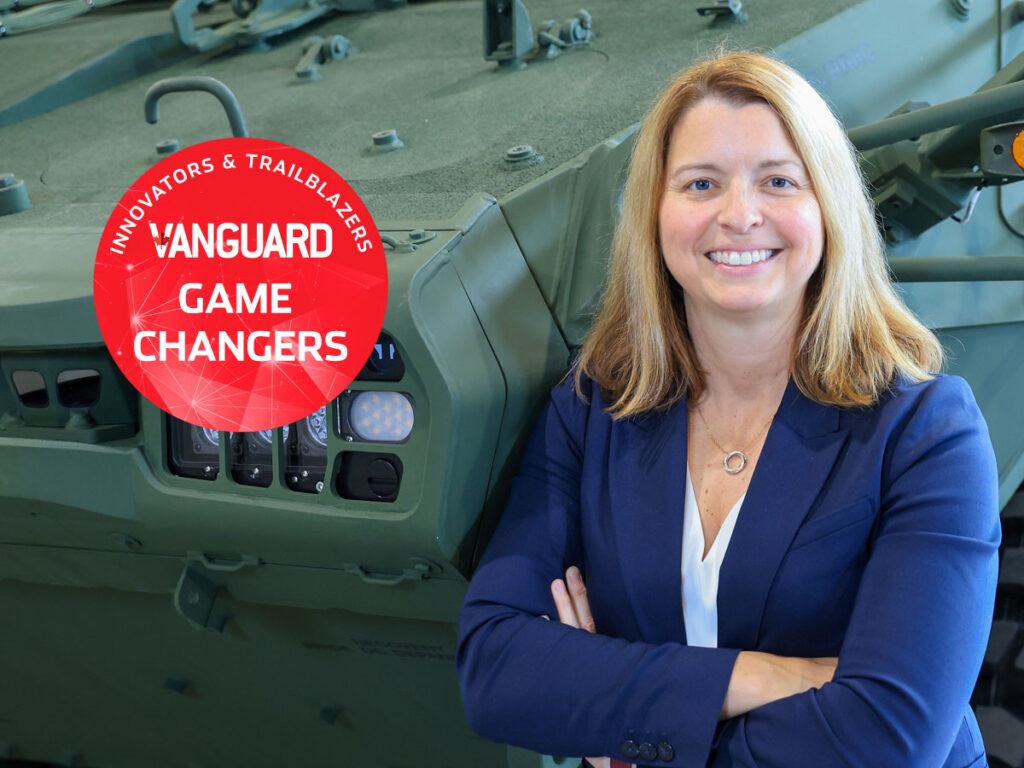Heather Damaren is the Director of Manufacturing for Canadian Operations at General Dynamics Land Systems–Canada. She graduated with a degree in Computer Engineering from Western University and quickly rose through the ranks after joining the company in an entry-level position in the Quality Assurance Department. Heather has a diverse background, having worked in various disciplines including Production, Manufacturing Engineering, Program Management, and Engineering Design & Technology. Her notable achievements include leading the delivery of Canada’s initial donation of 39 Armoured Combat Support vehicles to Ukraine in 2022. In her current role, Heather oversees all manufacturing operations, ensuring the timely delivery of Light Armoured Vehicles (LAVs) and other critical capability solutions to the Canadian Armed Forces (CAF) and allies worldwide.
How did you start out in this industry and how has it brought you to where you are today?
I graduated with a degree in Computer Engineering from Western University. Immediately following graduation, I was fortunate to be hired by General Dynamics Land Systems–Canada for an entry-level position in the Quality Assurance Department. Since then, I have worked in many disciplines across the organization including Production, Manufacturing Engineering, Program Management, Engineering Design & Technology and was the Program Manager responsible for delivering Canada’s initial donation of 39 Armoured Combat Support vehicles to Ukraine in 2022, all which led to my current position of Director of Manufacturing for Canadian Operations.
What is your role at your organization today?
In my current role I oversee our manufacturing operations. This includes weld and fabrication, assembly, quality assurance, manufacturing engineering, material control, and facilities management. Everything the manufacturing team does contributes to the delivery of Light Armoured Vehicles (LAVs) and other capability solutions to the Canadian Armed Forces (CAF) and Canada’s allies around the globe.
What was your most challenging moment?
My most challenging moment was also my most rewarding one. In June of 2022 the Canadian government announced that 39 of the Armoured Combat Support Vehicles (ACSV) destined for the Canadian Army would be donated to Ukraine.For me, as Program Manager, it was a professional challenge and also a personal success. Our team recognized the urgency in delivering this capability to the Ukrainian Ground Forces and so, up against a tight timeline, we took a different approach and challenged some of our traditional processes. We worked closely with our Canadian government counterparts in unchartered territory to quickly prepare, ship and deliver the vehicles to Ukraine. The importance of this project was understood by every member of the team, resulting in a humbling sense of accomplishment when we began training in Europe with soldiers a mere four months after the donation was announced.
What was your A-HA moment or epiphany that you think will resonate most with our readers? Tell us that story.
One of the things I love about being in Manufacturing is that we have A-HA moments during almost every shift of every day. Our team of experts works in a fast-paced environment where all members come together to find solutions to the hour-to-hour, shift-by-shift challenges that present themselves as we deliver products to our customers – that’s when you get the A-HA moment. Rarely do we go home at the end of a day without the satisfaction of a win.
How has innovation become engrained in your organization’s culture and how is it being optimized?
Innovation is very much a part of our culture. We need to be focused on emerging technologies, the evolving needs of our customer, and how these fuse together to synthesize disruptive capabilities that will offer advantage on the battlefield. This is very much a focus for business development and engineering, but also throughout the company.
Our innovation culture has also changed internally as our workforce moves away from traditional modes of operation to embracing digitization by going completely paperless, building with tablets, recording results in digital systems, and the execution of a manufacturing digital system. Our training and sustainment solutions are also rapidly taking advantage of technologies that enable ease of delivery, reduction of costs and enhancement of understanding.
What is a habit that contributes to your success?
I continually ask questions, and usually the question is “why?”. Why are we doing it that way? Is there a better way? What is holding us back? What is getting in the way of being more efficient?
Working in various areas of the company has given me the “big picture” context needed when problem-solving. My time in Quality Assurance in particular has had a huge impact on me. In fact, you could say it is in my blood, as my father worked in quality assurance for 40 years at 3M.
What is your parting piece of advice?
Keep asking questions! Establish the root cause of the problem you are trying to solve, and continue to ask, “does this solution effectively address challenges and ensure the issues don’t reoccur?” Keep asking this until you get the right answer!

